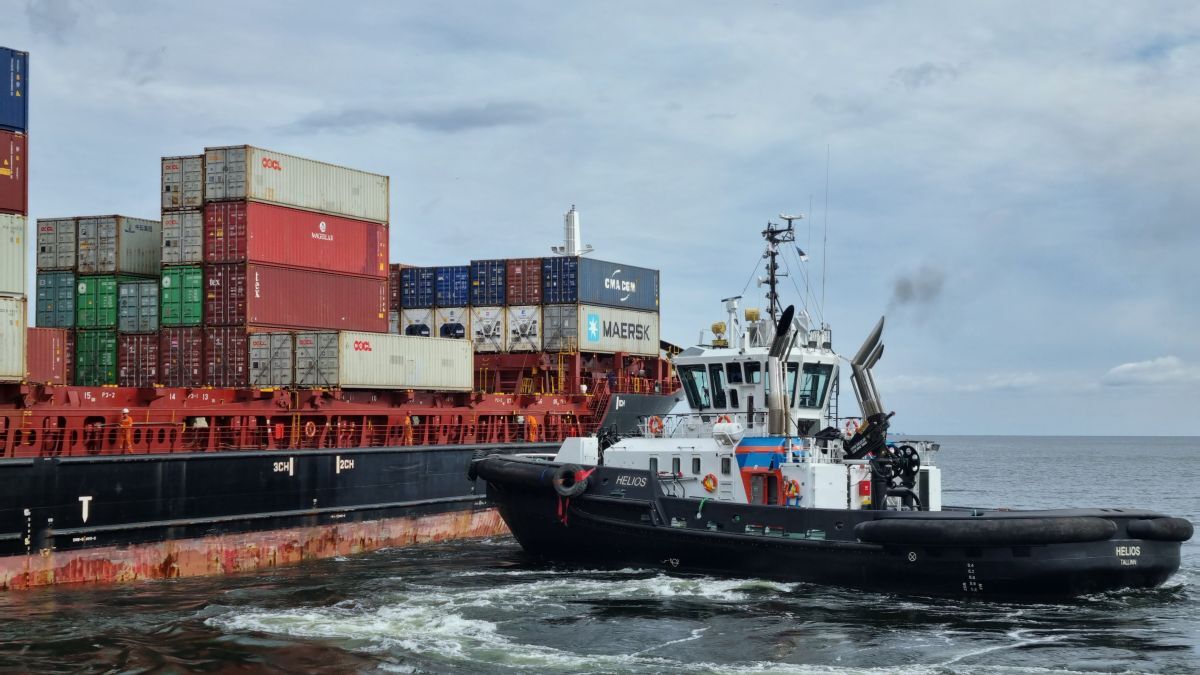A port authority and tug owner provide their perspectives on who should pay and who will benefit from technology adoption in towage
Tug owners and port authorities can gain a lot from implementing digitalisation technologies, simulator training and semi-autonomous operations, but there are still major challenges ahead.
Forth Ports chief harbour master Alan McPherson and Alfons Håkans manager for health, safety, security, environment and quality Captain Kimmo Lehto provided perspectives from a port authority and a tug owner during Riviera Maritime Media’s Digitalisation and tug operations: reality versus hype webinar.
This was held 7 June in association with premier partner Uzmar as part of Riviera’s TUGTECHNOLOGY Webinar Week.
They outlined how digitalisation technologies – artificial intelligence, machine learning, virtual and augmented reality, intelligent vessels and digital twins – would benefit tug operations around ports.
This included considering technical, operational and commercial aspects, methods of reducing fuel costs and emissions through data analytics and the trend towards autonomous vessels.
Capt Lehto explained there are multiple challenges deploying digitalisation technologies, especially in ports with adverse weather and sea conditions, such as in Scandinavia, where some ports are covered in ice for six months a year.
“One size does not fit all as there are different tugs, ports and conditions,” he said. “Solutions excellent for one operator may not necessarily be fit for another.”
But there are similarities and technology can be adapted. For example, digitalisation and remote monitoring enable better planning and an understanding of fuel savings.
“It is good to know some captains use less fuel than others,” said Capt Lehto. With simulators, owners can advise tug masters how to improve performance and save fuel.
“We can teach them best practice, show them the data analysis to give them a better understanding of fuel consumption and economy,” he explained. “Speeding tugs in transit can then be avoided.”
Simulator training and communications also improve co-ordination. “Training tug masters and pilots together improves harbour towage,” Capt Lehto added. “Safety always comes first.”
He wants to see more data sharing and co-operation between stakeholders including shipping agents, shipowners, port operators, cargo owners, linesmen, tug crews and pilots.
“It is getting all the players on board to share data between stakeholders, updating the data, co-operating and communicating,” Capt Lehto said. For example, getting better estimated time of arrival and departure data to tug operators so they can plan operations and reduce transit speeds. “Every player has data, and they should be willing to share.”
Ship captains need to share estimated time of arrival information to allow better planning of berthing, port operations and tug requirements.
Shipping agents should share whether the cargo to be offloaded or loaded is sensitive to weather, which could delay ship departure in adverse conditions. “Tug captains would also want information when the pilot is on board,” Capt Lehto said.
Investing in digitalisation can also bring commercial benefits. “It is difficult to build business cases for operators,” he said.
“Our aim when we have the data and can preplan operations is to avoid unnecessary transits and reduce emissions from tugs and assisted ships.”
Mr McPherson agreed there are commercial benefits for port operators implementing digitalisation technologies, high-bandwidth communications networks and more remote operations.
He said intelligent tugs and ports can be developed if regulations, human resources, networks and affordable technologies are ready.
“We need to look at the commerciality of all these technologies, criteria for investment, their returns in cost savings and other benefits,” said Mr McPherson. “Tug efficiency is a key benefit of digitalisation, so is safer operations. But the benefits are still not clear for port operators.”
He does not expect tugs will be run remotely from shore or will be fully autonomous, but there will be a steady process of technology adoption.
“Autonomous tugs are some way away; there needs to be regulations,” said Mr McPherson, “But we will see advanced onboard capabilities and conditions on tugs improving.”
Challenges in implementing autonomous tug operations include retraining masters to operate tugs from shore, recruiting people with new skills and implementing local, national and international rules.
“The type of skills will be more like gaming than in maritime,” said Mr McPherson. “We will need a different type of person and training will need to be different.”
It will also be difficult to replace the expertise and intuition of tug masters who have years of experience. On one of Forth Ports’ tugs, a master recognised an issue in the engineroom far quicker than a sensor would, resulting in swift maintenance instead of an expensive machinery failure.
“Tug masters may find it difficult to move onshore and it would be hard to retool and retrain them,” said Mr McPherson.
Another challenge is communications between shore and a remotely commanded or monitored tug in large port areas. More harbours are being covered by 5G communications networks, but for Forth Ports, investment would be high and 5G would be ineffective.
“5G only has a range of 500 m. The Forth waterway is 300 m2 and 16 km wide in the estuary, while tugs operate 8 km from any coast, so 5G would be difficult to introduce and would be costly,” said Mr McPherson.






